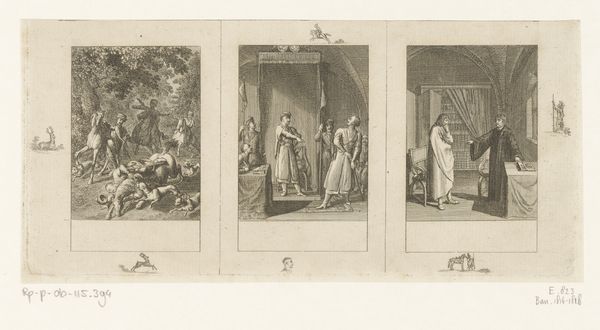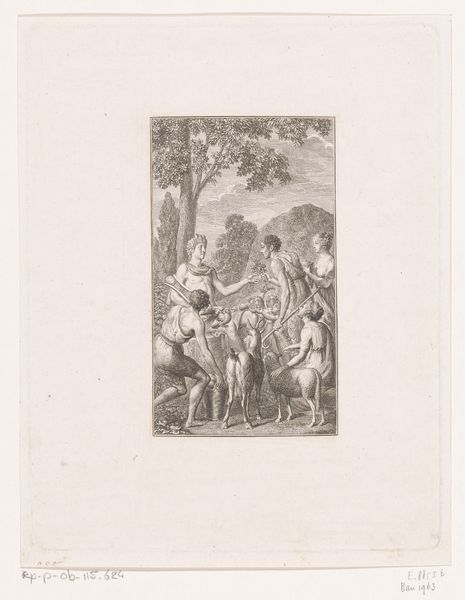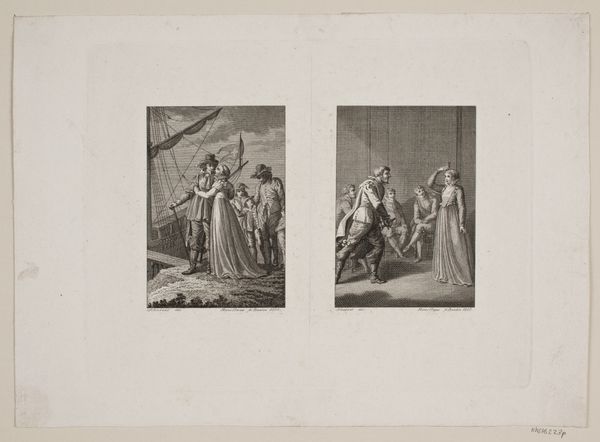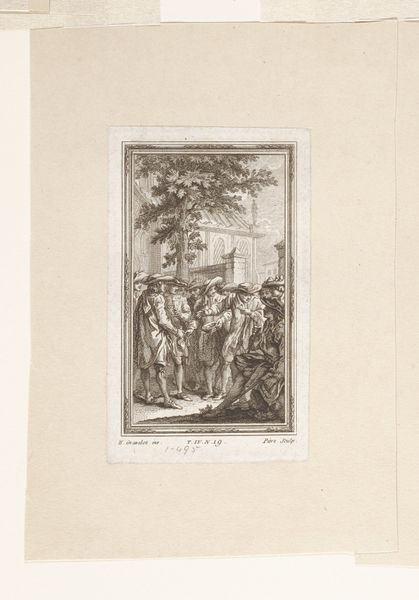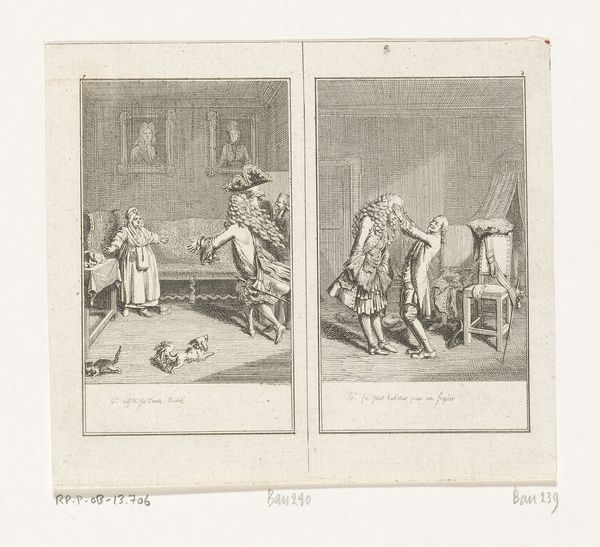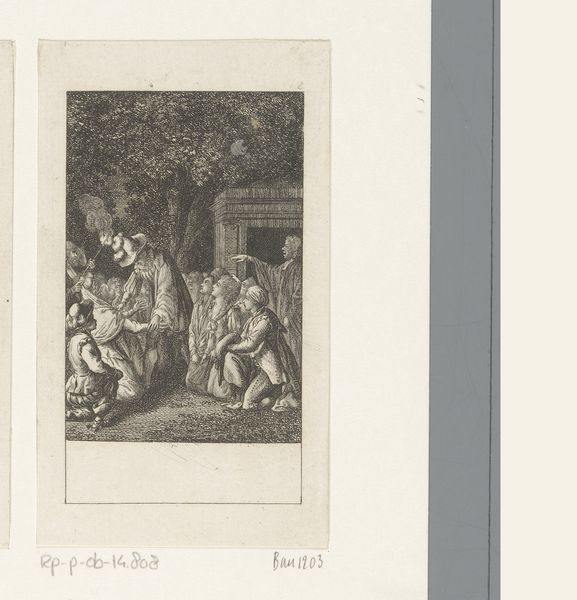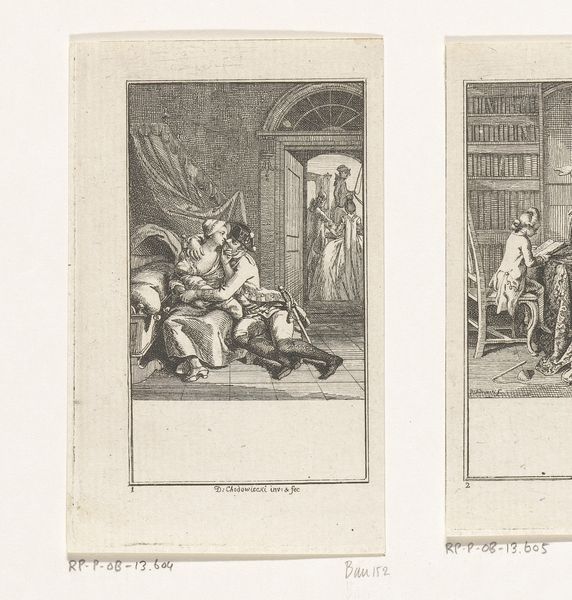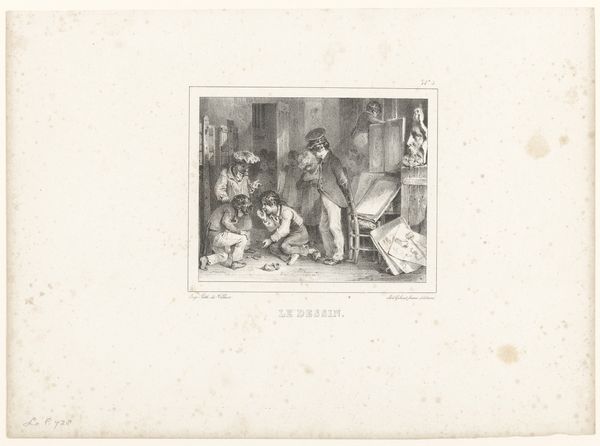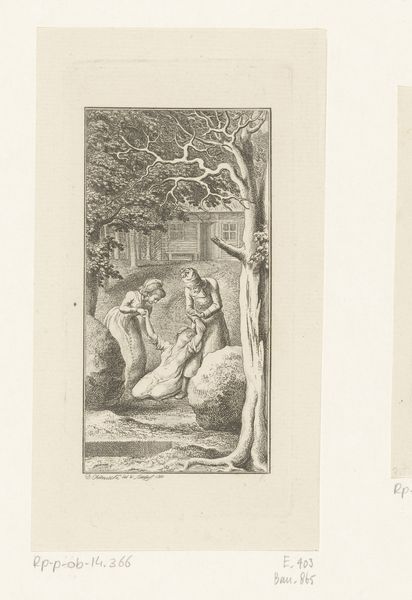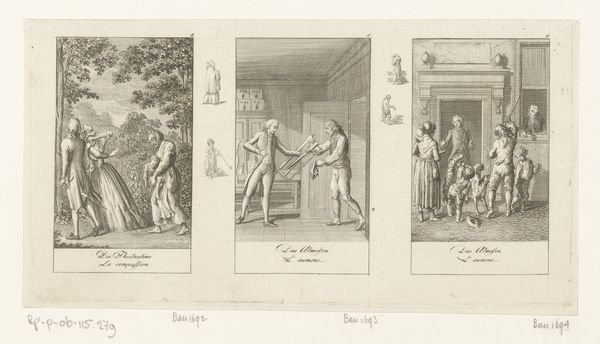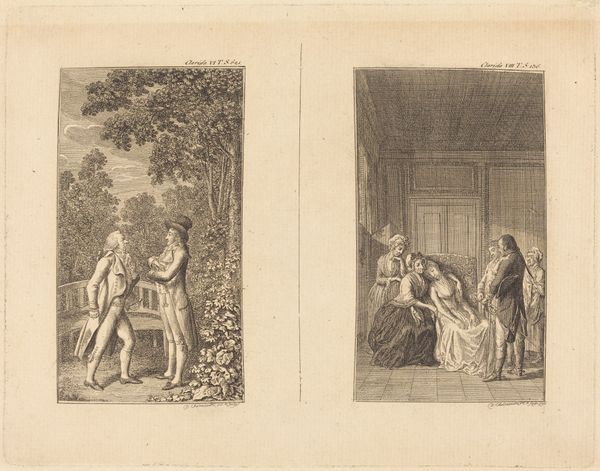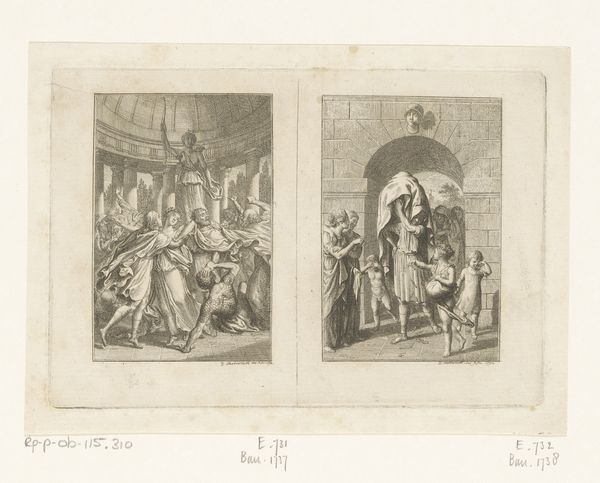
drawing, graphic-art, print, paper, engraving
#
drawing
#
graphic-art
#
narrative-art
# print
#
figuration
#
paper
#
romanticism
#
orientalism
#
line
#
history-painting
#
engraving
Dimensions: 145 mm (height) x 185 mm (width) (Plademål)
Editor: Here we have Meno Haas’ "Orientalske scener" from 1803, a print made with engraving. The images feel like scenes from a play, framed and separate, yet…exotic. I’m curious, how would you approach interpreting these scenes? Curator: Considering this through a materialist lens, the act of engraving itself is crucial. The artist, mediated through the printing press, reproduces images intended for wider circulation, democratizing access to "Oriental" narratives. How does this method of production—multiple, reproducible, and relatively inexpensive—affect the reception and consumption of these images by a European audience in the 19th century? Editor: It certainly made them more accessible than a painting. It’s interesting how the choice of medium shapes its distribution and interpretation. Curator: Precisely. We should also investigate the paper itself: its quality, source, and potential trade routes, as this provides a view into economic exchange, highlighting the consumption of luxury goods by those other than the aristocracy. The lines in the engravings are incredibly deliberate and that too required significant physical labor to produce. Think about the hands involved – from the artist, the printmakers and sellers to the end consumer. Editor: So, you're saying by examining the material elements, we can understand its social and economic context and question how such material factors influenced 19th-century European views of the Orient? Curator: Exactly. Even the artistic "style"—Romantic Orientalism—is a product of material and economic conditions allowing artists like Haas to create and circulate these works, feeding into the exoticism demanded by a European consumer base. Editor: That provides a rich perspective. I never thought about examining a print through the lens of its materiality. It opens up new questions about production, distribution and labour in art. Curator: Indeed. Analyzing art this way really underscores that objects are never truly isolated. They are always deeply embedded in networks of people, materials and economic forces.
Comments
No comments
Be the first to comment and join the conversation on the ultimate creative platform.
